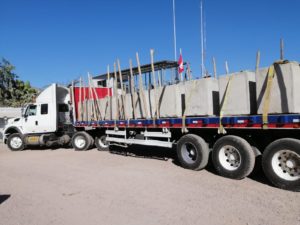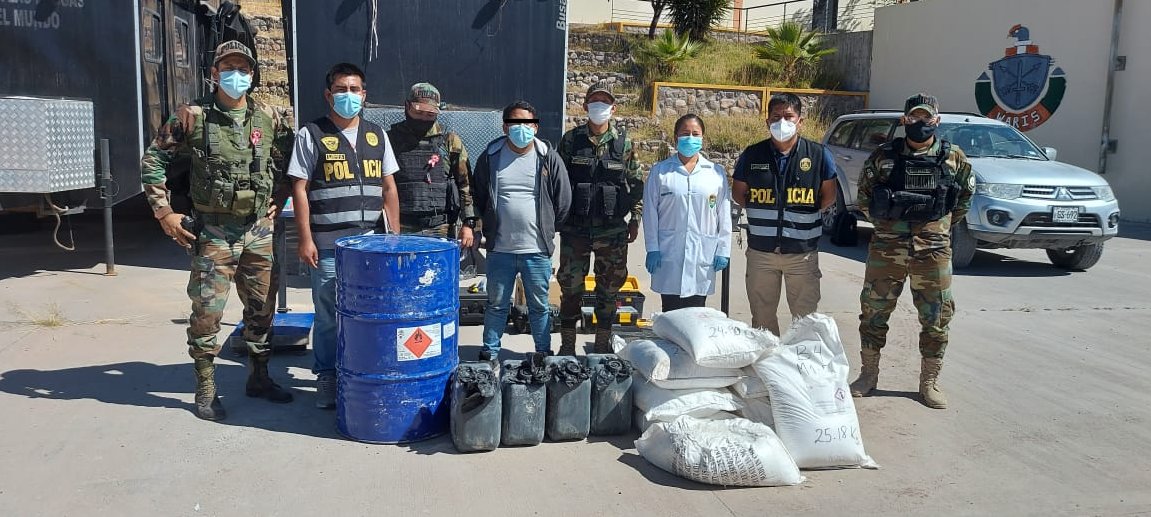The Peruvian National Police (PNP, in Spanish) seized 10 tons of chemical precursors used for cocaine production in the Apurímac, Ene, and Mantaro Rivers Valley, in less than a week.
During the first operation, on July 5, service members raided a rustic lab in the district of Llochegua, Ayacucho department. “Police personnel found 249 rounds of ammunition and destroyed more than 5 tons of chemical precursors,” the PNP said in a statement.
On July 10, the PNP’s Anti-drug Directorate seized another 5 tons of substances in the district of Jesús Nazareno, Huamanga province, also in Ayacucho.

Anti-narcotics agents intercepted a semi-trailer that was transporting 10 rectangular blocks of reinforced concrete. The vehicle had left Lima and was bound for the Cusco region.
“The suspicious shape of the blocks caught the agents’ attention, and they decided to inspect them one by one,” the Peruvian newspaper El Comercio reported. Upon opening one of the blocks, agents found metal cylinders, containers with acetone, and bags with calcium chloride.
Authorities sent the concrete blocks to the Huamanga Anti-drug Tactical Operations Department, where investigators opened them and found more than 3,300 kilograms of acetone and 2,053 kg of calcium chloride.
“The seized chemical precursors would have been used for drug production,” the PNP said.
Together, the two operations were the largest seizure of chemical precursors since last March, when the PNP seized 40 tons of precursors and arrested eight members of a criminal gang that operated in Lima, Ica, and Ayacucho.
In addition to acetone and calcium chloride, substances such as sulfuric acid and potassium permanganate are among those that criminals use most to transform the coca leaf alkaloid into cocaine hydrochloride, or cocaine powder.
As such, the United Nations Office on Drugs and Crime (UNODC) believes that controlling these precursors is key in the fight against narcotrafficking. “Without these chemicals, you obviously cannot make the drugs,” the UNODC said in a report.









